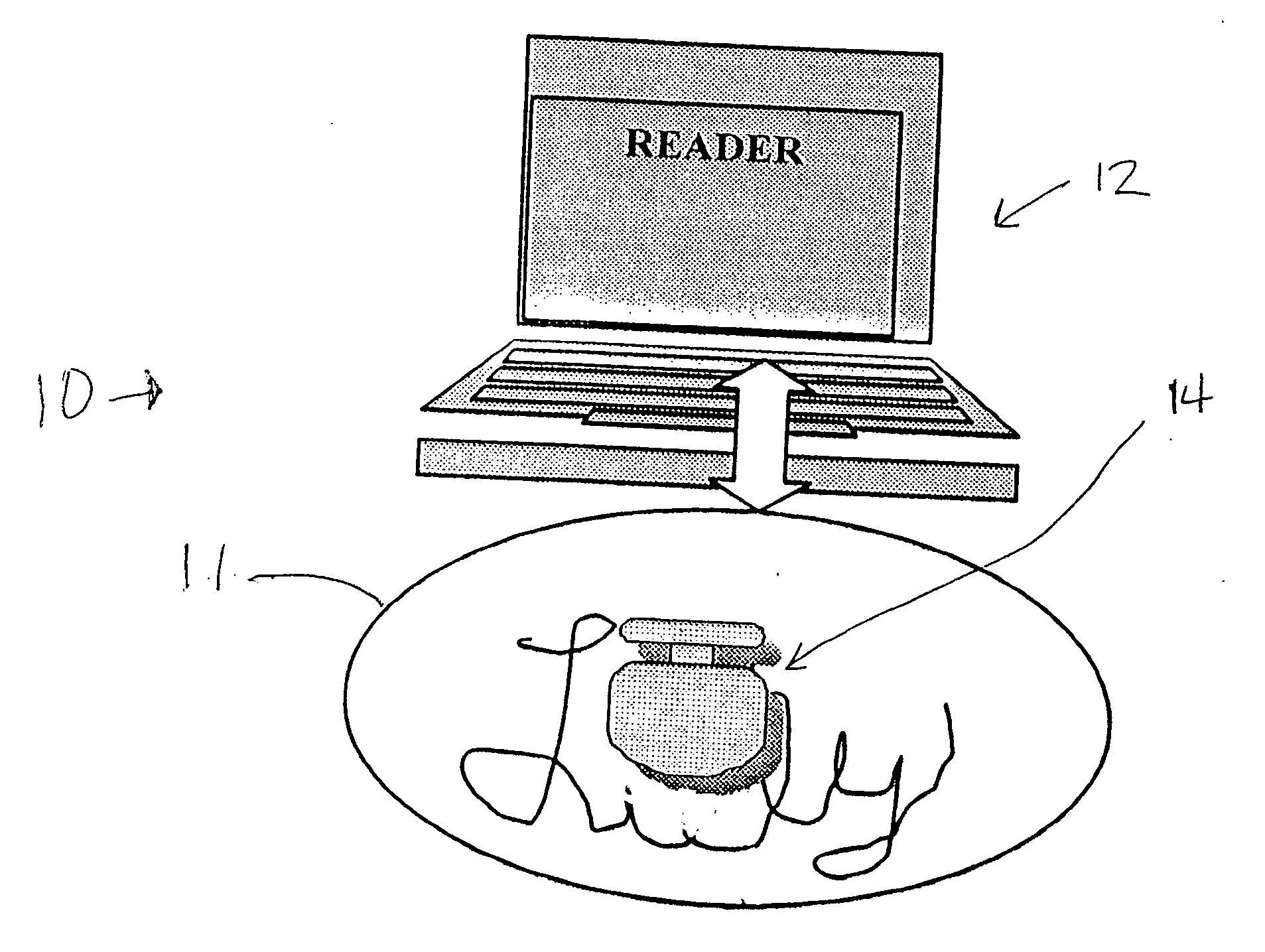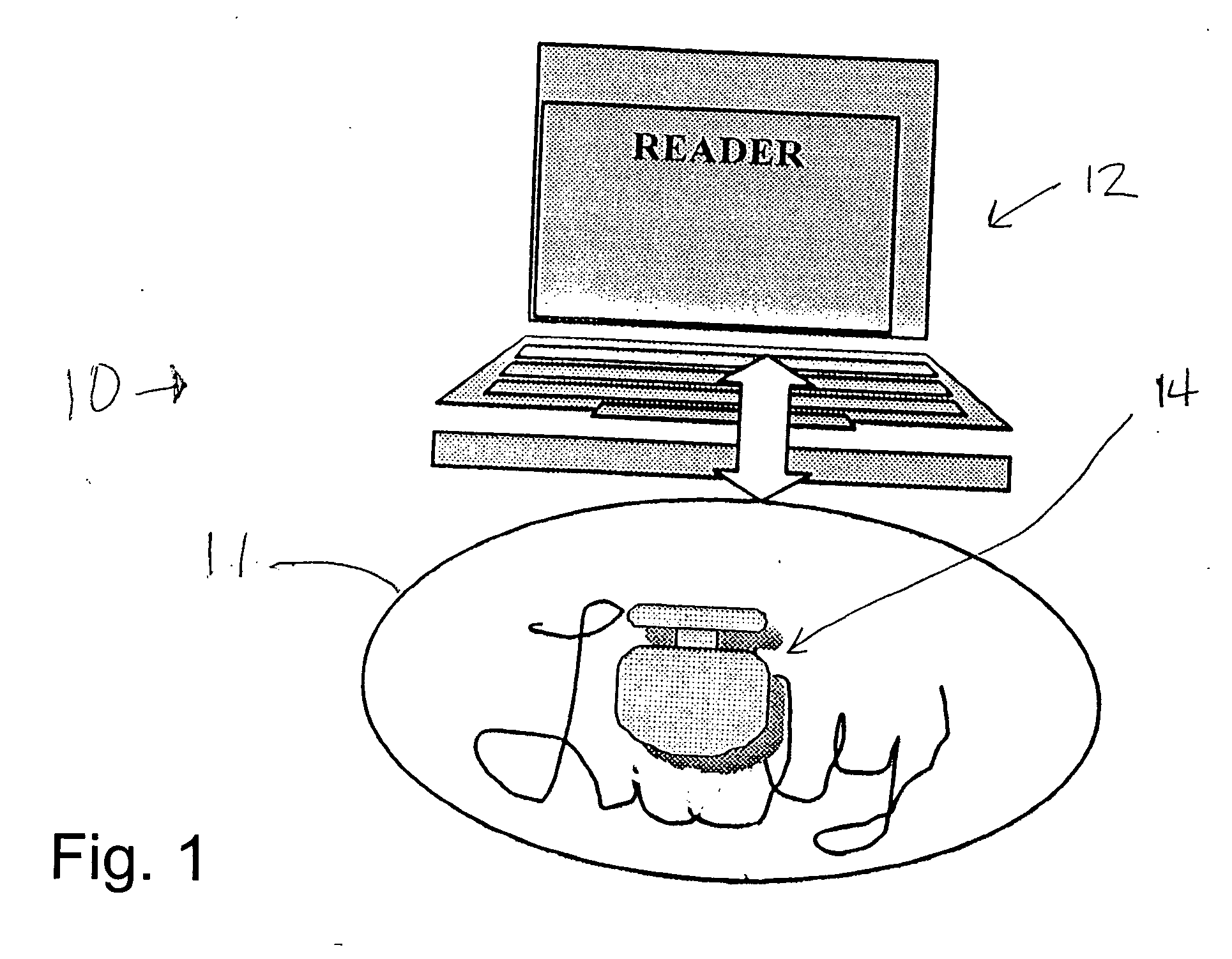Trackable pills with electronic ID tags
a technology of electronic identification and tracking pills, applied in the field of authentication and tracking of medical pills, can solve the problems of inability to effectively use single unit dosages, inability to utilize, and high accuracy of bar codes, and achieve the effect of increasing the size of the tag antenna and protecting privacy
- Summary
- Abstract
- Description
- Claims
- Application Information
AI Technical Summary
Benefits of technology
Problems solved by technology
Method used
Image
Examples
Embodiment Construction
[0034] In the drawings, FIG. 1 schematically indicates a pill verification and tracking system 10, including a pharmaceutical dosage, specifically a pill 11, and a reader 12. The reader sends out an interrogating signal, generally as explained in the above mentioned U.S. Pat. No. 6,480,699, which is incorporated herein by references, and in the above referenced co-pending application. A radio frequency ID tag device 14 is incorporated in the pill 11 either on the surface of the pill or inside the pill. The tag also is constructed generally in accordance with the disclosure of the above patent and co-pending application. In FIG. 1, the pill 11 is shown as a tablet, while in FIG. 2 the pill is a capsule 11a. Indicia 13 may be included on the pill 11 (or the pill 11a) to identify the manufacturer or the drug name. The interrogating signal from the reader 12 provides power for the RF ID tag 14 collected by an antenna and a power supply on the tag. If the tag is within approximately 1 or...
PUM
 Login to View More
Login to View More Abstract
Description
Claims
Application Information
 Login to View More
Login to View More - R&D
- Intellectual Property
- Life Sciences
- Materials
- Tech Scout
- Unparalleled Data Quality
- Higher Quality Content
- 60% Fewer Hallucinations
Browse by: Latest US Patents, China's latest patents, Technical Efficacy Thesaurus, Application Domain, Technology Topic, Popular Technical Reports.
© 2025 PatSnap. All rights reserved.Legal|Privacy policy|Modern Slavery Act Transparency Statement|Sitemap|About US| Contact US: help@patsnap.com



